Last Updated on January 30, 2024
Rumors were that Greek director Yorgos Lanthimos had turned the story of Queen Anne and the two women who fought for her favor into a twisted, surrealist erotic thriller. “The Favourite,” New York Film Festival’s 2018 opening night pick, screened for the press at 10 AM. Concerned that an acrid take on the early 18th century power struggle could be unsettling morning fare, I showed up with an empty stomach.
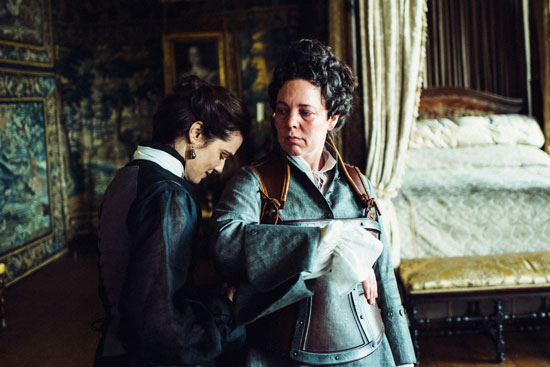
To help keep this site running: Willow and Thatch may receive a commission when you click on any of the links on our site and make a purchase after doing so.
![]()
“The Favourite” (2018) is set in England during the first part of sickly Queen Anne’s (Olivia Colman) reign. Sarah Churchill (Rachel Weisz) is the Queen’s close friend and is all but governing the country. Abigail Hill (Emma Stone) arrives in the fragile and volatile environment and becomes a scullery maid at Kensington Palace, and plots to reclaim her status by becoming indispensable to the Queen.
Throughout most of the film, the queen wears a white cotton nightdress, but in the opening scene she’s all decked out. We watch as her dressers remove the Parliament Robe, fold the heavy, long velvet train, and lift the crown off her head. This is the first of countless of the drama’s transporting moments.
During this visual feast and in first few seconds of “The Favourite,” a small but audible chuckle waves across the aisles of the theater. It’s been brought on by a clever interchange between the Queen Anne and Sarah, and their banter immediately locates us. This looks like a stately costume drama, but we are actually watching a comedy. Lanthimos wanted to tell the story with a “little bit of a twist to the genre” and he delivered a gloriously filmed, wickedly entertaining, and sometimes tender historical tragicomedy. I could have eaten breakfast – a big one. I loved this film, and it’s sure to be an Oscar contender. (Update: “The Favourite” was nominated for 10 Oscars, and took home Best Performance by an Actress in a Leading Role, for Olivia Colman.)
A fierce sexually charged rivalry between Sarah and Abigail does escalate into a brutal power struggle, but “The Favourite” isn’t particularly graphic or gritty, and its heavier moments are brightened by humor. Like the elaborate tapestries hanging on the walls around them, the actors are the exquisite fiber of film, and its three dynamic leads make it a standout. Beyond being female-driven, “The Favourite” is uniquely about women and their relationships to each other, themselves, and to power. And there’s never been a period drama like it.
The camerawork is intimate and raw, and the film’s natural lighting and saturated colors expose a drawn and worn queen. Colman is extraordinary as the desperately needy, petulant, explosive, often ill Anne. It’s hard to give her sympathy but she deserves it: the queen is stricken with gout, and has had 17 pregnancies but has no living children.
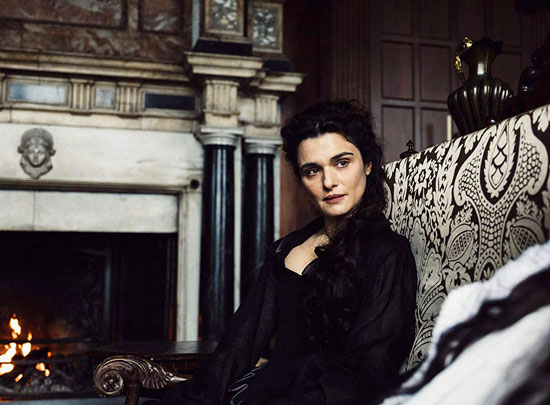
Confidante Sarah stays close to Anne. Though Sarah dominates the queen to her advantage, she also cheers her, comforts her and coaches her through her pain, and tells her when her make-up job is ridiculous. Friends since childhood, they have history. They call each other Mr and Mrs Morley.
Above stairs, there’s a duck race, and cinematographer Robbie Ryan shoots the scene in slow motion, pairing the crimson-faced men who cheer on the ducks with the blood-red pomegranates that they are feasting on. The prize duck Horatio is in the lead, and England is at war with France. Anne doesn’t realize they are still at war, as she leaves the details of politics to Sarah. Someone must run things.
Newcomer Abigail is Sarah’s cousin. She’s fallen far from her aristocratic beginnings, and when we first meet her she’s on her way to beg for a job, riding in a cramped carriage. We watch Abigail’s face, as she watches the unsavory man across from her fondle himself. Her mud-covered arrival at the backdoor of Kensington Palace signals the hardships she’s endured since the age of 15, when her father lost her in a card game.
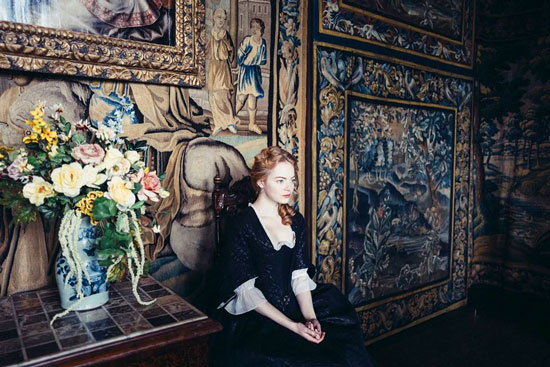
Below stairs, Abigail spends the night spent sleeping in the claustrophobic servants quarters and in the morning there’s a cold water bath, delivered by way of another servant and her ladle. Abigail’s first work is to scrub the kitchen floors and she’s wholly unprepared for the toil. Abigail has another future in mind, and her only resources are her quick intelligence, cunning and beauty. As in real life, the servants in “The Favourite” have ears, and Abigail is keenly tuned in to the queen’s weakened state. and how it can work to her benefit.
Initially the depth of Sarah and Anne’s bond seems impenetrable. But to survive, Abigail, who “favors comfort and safety above all else” needs to become Anne’s preferred companion, and she will do what she must. The first time the queen calls for Abigail, and not Sarah, my facial muscles pull into a tight cringe. Things get ugly, fast.
Lanthimos was interested in exploring the personalities of these three powerful real women and how they “affected a whole country and the fate of millions of people. We were looking at what it means to be a favorite, and how that functions in this world.”
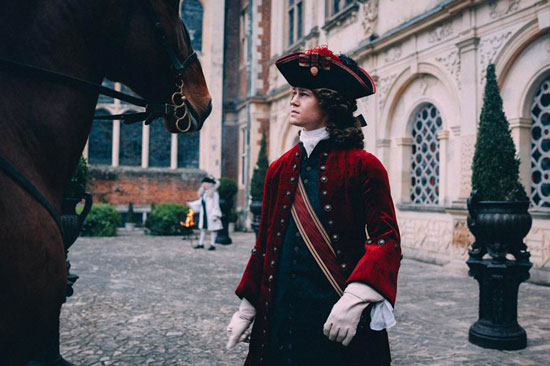
He does this in part by allowing the excellent vivid realism of this film to fraternize with outlandishness. They make such a good pair that I hear myself say “oh my god” more than once. I know better than to talk during a theater filled with film critics, but I can’t help myself. (Also, my apologies for all my sharp inhalations in response to the characters’ cutting remarks.) Watching this film is such a visceral experience that I at one point I discover I’ve pulled my scarf over my nose to shield me from some putrid smells inside Kensington Palace. The extreme wide angled scenes make me feel like I’m in a 3D viewing experience, the kind where the audience collectively reels and lurches and bobs left and right because they are on a virtual roller coaster ride.
The lens highlights some of the film’s concerns: lone human figures dislocated within those huge spaces, how few people effect the vast world, the distorted and claustrophobic nature of the opulent surrounds. Lanthimos thought the usage felt appropriately period, reminiscent of the Dutch masters who placed an image of a convex mirror in their paintings of a room to reflect back the whole, distorted space.
In a daringly conceived ball scene, Anne’s eyes fill with anger and confusion as the room’s attention turns to Sarah. Sarah is engaged in likely the most offbeat (and comical) dance ever seen in a historical drama, but Anne is not amused. For a brief moment, Anne reclaims her power, and I glimpse a new possible direction for the film. While the what of “The Favourite” might be guessed at, there’s little use in trying to predict the how. That’s classic Lanthimos (The Killing of a Sacred Deer, The Lobster), who wants his viewers to actively engage in pleasurable, but sometimes uncomfortable, watching, and then keep thinking about what they saw.
By integrating unexpected modern accents (like the dance scene with Sarah) into what feels like an otherwise historical authentic piece, he succeeds in eliciting his desired response. In his own words, these contemporary elements extend to “the physicality in general of the characters and actors.” Emma Stone, as Abigail, has a perfect open-mouthed WTF expression that briskly crosses our 300 plus year gap.
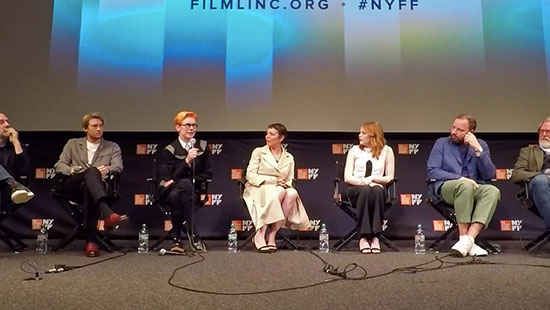
So do the sumptuous looking but accessible costumes from Sandy Powell (The Young Victoria, Shakespeare in Love, Mary Poppins Returns). After the screening, Powell explained the relative lack of detail of circa 1705 costumes: “They’re historically correct for the cut, and then I used contemporary fabrics. I used African fabrics and stripped away all the decoration, sort of bare bones. All the costumes for the kitchen staff are made from old jeans.” When Abigail arrives, her first costume is made from that salvaged denim. As she moves up in stature, her rise is defined by her increasingly more elaborate clothing.
History buffs will find the real-world markers: the War of Spanish Succession, the Whigs and the Tories going head-to-head in Parliament, etc. but Lanthimos is quick to point out that the historical facts were only a starting point. “Then we were interested in creating a story around these three women, and not necessarily being loyal to a specific event or the specific politics of the time. We tried to simplify that part of it so we would focus more on the characters, and through them, understand in a way that is relevant to any period, how people in such positions, according to their character, behavior, mood can actually affect very important events in history. We focused on whatever we thought was necessary and interesting to tell that kind of story, and veered off in many different directions from there.” And how.
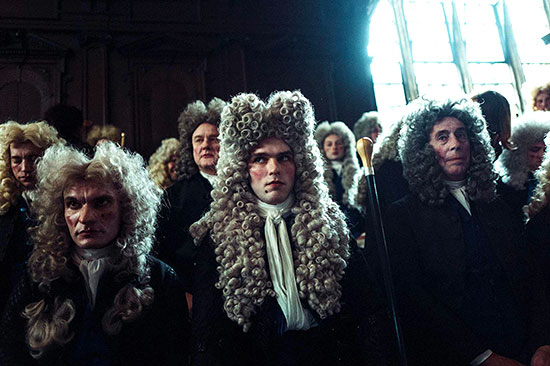
“The Favourite” is complex, laugh out loud, and shockingly potty mouthed. The expert delivery and positioning of the foul language makes it flow over me like a crystal clear river. At turns I’m swept out of this stream into a dark open sea, pulled to lower and lower psychological depths. My escorts are a trio of 18th century women, each the architect of her own demise, and a soundtrack that resembles a plummeting submarine. Once sunk, it’s outright war in the fight for power, self-preservation and love.
In the dark theater, I scribbled my thoughts about the film into a small notebook. I can’t decipher all of them, but early into the movie, in between the messy “childish amusements” and “Anne’s melancholy swiftly turns to fits of yelling… hormonal imbalance?” I wrote something very clearly: “This is a great film.”
Somewhere around two-thirds into the movie I changed my mind. Maybe my hunger was making me ungenerous, but at that moment I needed more resolution than the film was giving. I wanted to flip back to this exaltation and cross it out. It was too dark to find my words on the page, so I scribbled in some caveats to say this isn’t a perfect film.
Still, “The Favourite” is revelatory. Lanthimos took inspiration from multiple period dramas, including Bergman’s Cries and Whispers, Forman’s Amadeus and Greenaway’s Draughtsman’s Contract, but from start until shattering end “The Favourite” is inseparable from the director’s vision.
When the last scene played out and the lights went up, I changed my mind again. I found my declaration of greatness, and underlined it, twice. Turns out, imperfect and great make fine bedfellows.
The credits roll to Elton John’s “Skyline Pigeon.” His lyrics about a captive bird turned loose by a prisoner land deep in my heart. It’s his original 1968 harpsichord version, and it sounds as if he’s written it for Sarah, or Abigail, or more likely, Anne. “The Favourite” is a wild ride and the song strips everything bare, driving home the point that each of these women was a prisoner of a sort, Anne most of all. That this is English history. Almost.
Starring Olivia Colman, Emma Stone, Rachel Weisz, Mark Gatiss.
Rated R
If you enjoyed this post, you’ll want to wander over to The Period Films List. You’ll especially like the Best Period Dramas: Tudor and Stuart Eras List. Also see our article about the Real Queen Anne, and our post about My Cousin Rachel and The Diary of a Chambermaid.



Randal
February 5, 2019 at 12:09 am (6 years ago)Far from my favourite for a variety of reasons, including a low class approach to supposedly high class people. As to nominations, awards, I say “to each his/her own”.
Kathleen Tilton
February 28, 2019 at 10:24 am (6 years ago)Could not agree with you more Randall. i thought the entire thing was in poor taste.
Joy
January 28, 2019 at 10:51 pm (6 years ago)A very interesting film. It has funny moments but I would not say it is a comedy. The actors are amazing especially Olivia Coleman. I saw it 2 days ago and it is still on my mind.